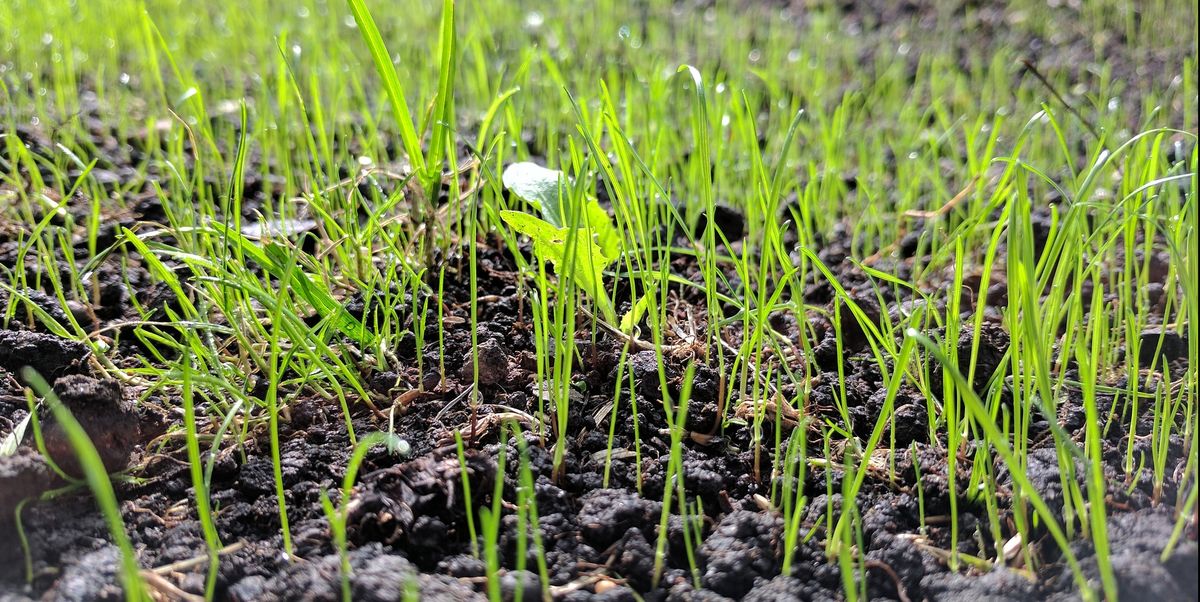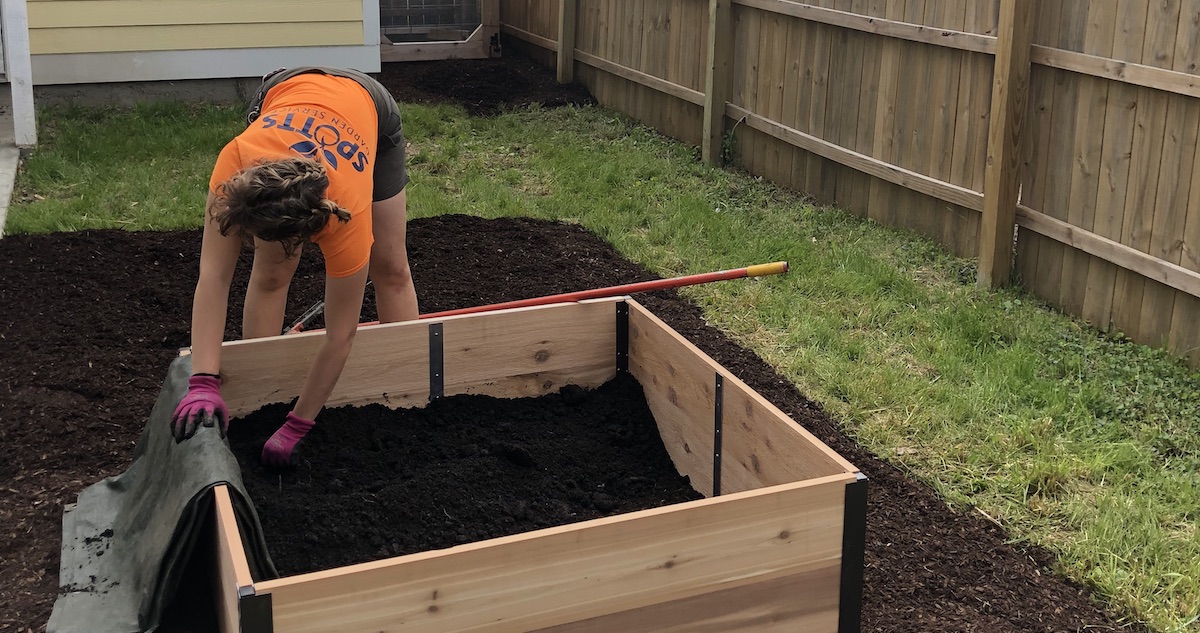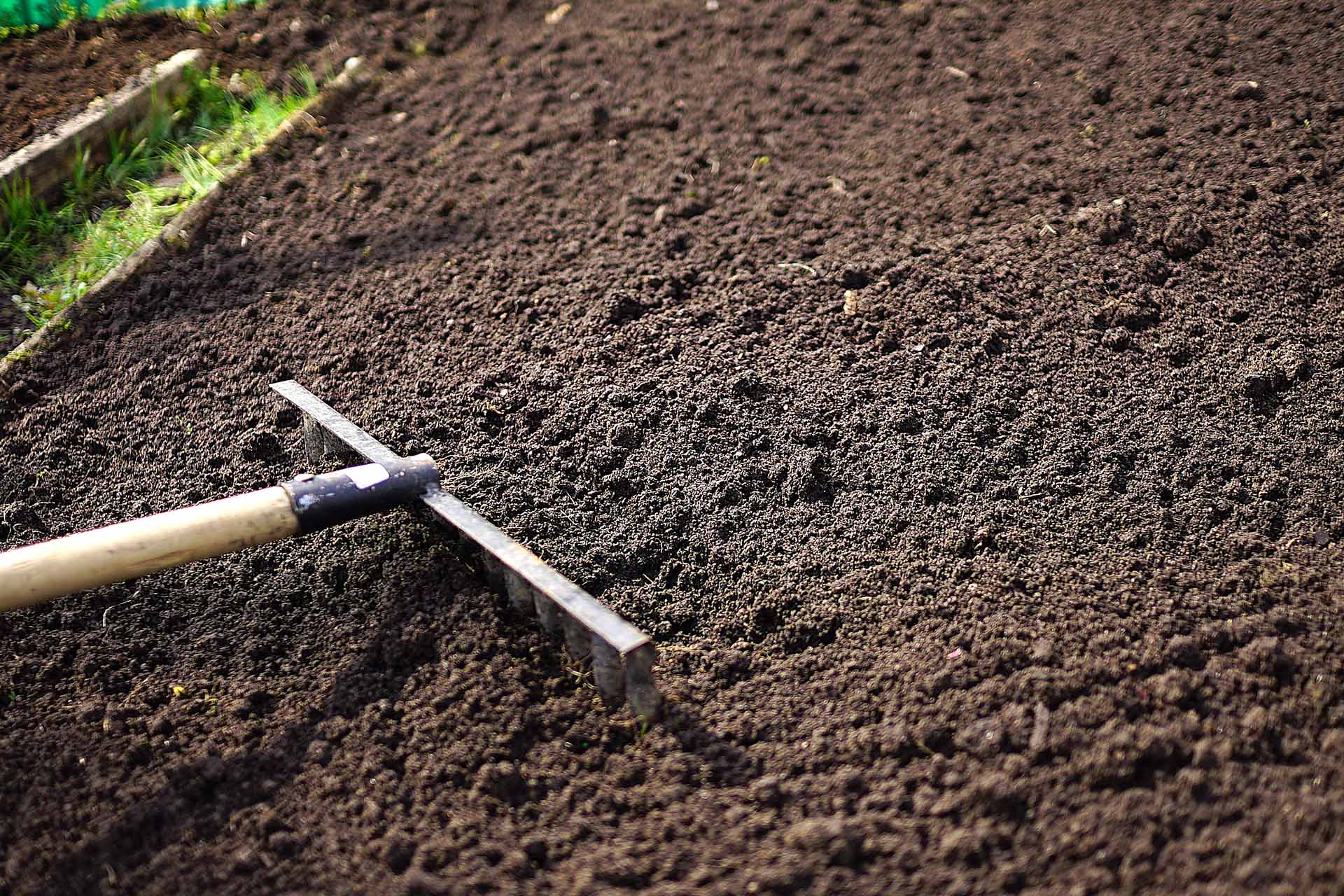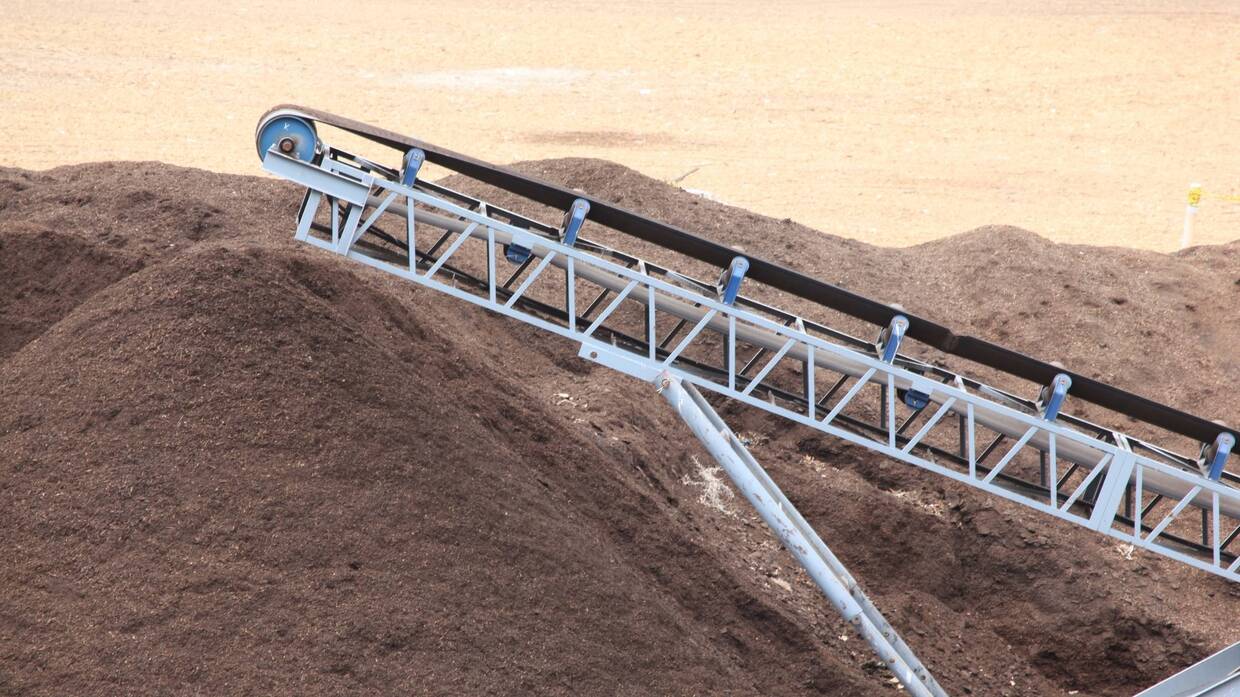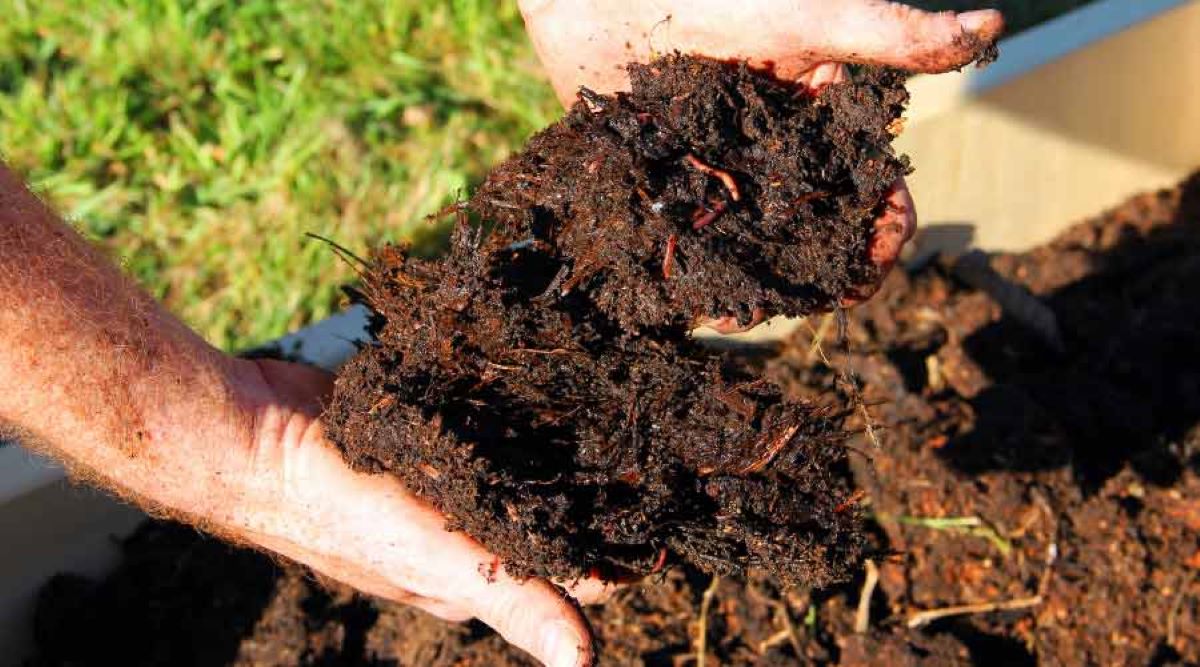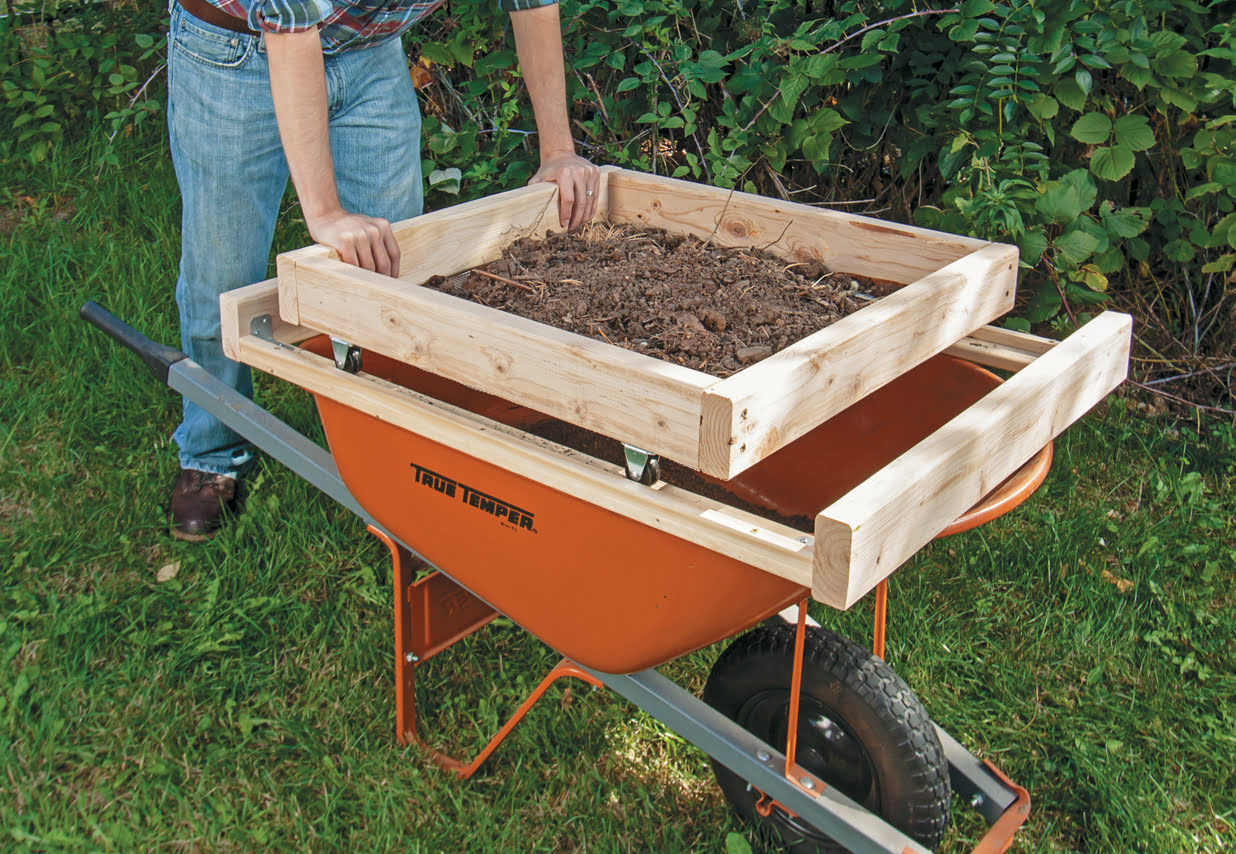Home>Gardening Basics>Understanding Soil>How Much Topsoil For Overseeding
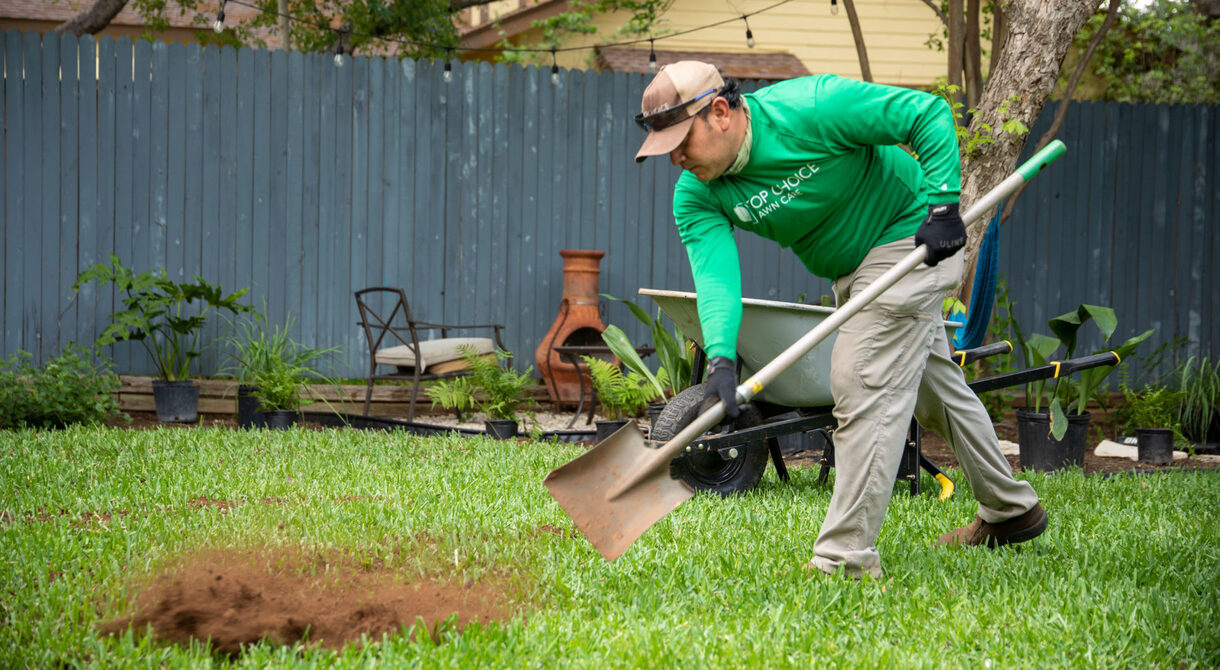

Understanding Soil
How Much Topsoil For Overseeding
Modified: February 8, 2024
Discover the importance of understanding soil for successful overseeding. Learn how much topsoil you need and maximize your lawn's potential.
(Many of the links in this article redirect to a specific reviewed product. Your purchase of these products through affiliate links helps to generate commission for Chicagolandgardening.com, at no extra cost. Learn more)
Table of Contents
Introduction
Are you looking to revitalize your lawn and restore its lush green appearance? Overseeding may be the solution you’ve been searching for. Whether your lawn has patchy areas or simply needs a boost in thickness and overall health, overseeding can help rejuvenate it. But before you embark on this project, it’s essential to understand the process and determine the amount of topsoil required.
Overseeding involves spreading a new layer of grass seed over an existing lawn to promote new growth and fill in any bare spots. The process helps to strengthen the grass, improve its density, and enhance the overall aesthetic appeal of your lawn. It’s an effective method for revitalizing a tired-looking lawn without the need for costly and time-consuming measures, such as tearing up the existing turf.
By incorporating new grass seed into your lawn, overseeding introduces fresh genetics, making the grass more resistant to pests, diseases, and extreme weather conditions. It also helps to improve the overall health of the lawn by replenishing weak or aging grass with stronger and more vigorous varieties.
One of the significant benefits of overseeding is the improvement in the lawn’s ability to withstand and recover from stress. Dense grass cover reduces weed invasion, prevents soil erosion, conserves water, and enhances the overall sustainability of your lawn.
Before starting the overseeding process, it’s important to assess the condition of your existing lawn and identify any underlying issues. Factors to consider include the type of grass, soil quality, nutrient levels, sunlight exposure, and climate conditions in your region.
To determine the success of overseeding, it’s crucial to understand both the requirements of the grass seed being used and the condition of the existing lawn. The amount of topsoil needed for overseeding can vary depending on these factors. By understanding the quantity of topsoil required, you can ensure that your lawn receives optimal nutrition and support for healthy growth.
What is Overseeding?
Overseeding is a technique used to improve the appearance and health of an existing lawn by introducing new grass seed into the lawn’s surface. It involves spreading a layer of grass seed over the existing turf to encourage fresh growth, fill in bare spots, and increase the overall density of the grass cover.
The process of overseeding is particularly beneficial for lawns that have thinning grass, dead spots, or areas affected by wear and tear. Over time, lawns can become sparse and susceptible to weeds, diseases, and insect infestations. Overseeding helps to address these issues by introducing new grass varieties that are more resilient and capable of outcompeting unwanted growth.
One of the primary objectives of overseeding is to enhance the lawn’s appearance by giving it a fuller and healthier look. By introducing new grass seed, you can fill in any bare patches and eliminate unevenness in the lawn. This results in a more visually appealing and uniform appearance.
In addition to the aesthetic benefits, overseeding also improves the lawn’s functionality and sustainability. A dense grass cover helps to prevent soil erosion, reduce weed growth, and conserve water by limiting evaporation. It also creates a more comfortable and enjoyable space for activities such as playing, relaxing, and hosting gatherings.
Overseeding is a versatile technique that can be done on different types of lawns, including cool-season and warm-season grasses. The best time to overseed depends on the type of grass and the climate of your region. Generally, the optimal time for overseeding is during the growth season for the specific grass type, when the soil temperatures are conducive for seed germination.
While overseeding can be a DIY project, it does require proper preparation and care for successful results. It’s important to assess the condition of your lawn, identify any underlying issues, and choose the right grass seed that is compatible with your existing turf. Adequate soil preparation, including aeration to improve seed-to-soil contact, is also crucial for successful overseeding.
Overall, overseeding is an effective and relatively simple method for rejuvenating a tired-looking lawn and improving its health and appearance. By introducing new grass seed and promoting fresh growth, you can enjoy a vibrant and lush lawn that enhances the overall beauty and value of your property.
Benefits of Overseeding
Overseeding your lawn comes with a wide range of benefits that contribute to the overall health and appearance of your grass. By incorporating new grass seed into your existing turf, you can enjoy the following advantages:
- Improved Lawn Density: One of the main benefits of overseeding is the increase in grass density. Over time, lawns can develop thinning areas or bare patches due to foot traffic, disease, or environmental factors. By introducing new grass seed, you can fill in these gaps and create a lush and uniform lawn.
- Enhanced Weed Control: A dense lawn created through overseeding acts as a natural barrier against weeds. When the grass is thick and healthy, it outcompetes and shades out weed seeds, preventing them from germinating and establishing in your lawn.
- Improved Disease Resistance: Overseeding with disease-resistant grass varieties helps to reduce the risk of lawn diseases. By introducing new genetics, you can strengthen the overall resilience of your lawn and minimize the chances of disease outbreaks.
- Better Tolerance to Environmental Stress: Overseeding with grass varieties that are well-adapted to your region and climate helps to improve your lawn’s resistance to environmental stresses. Drought, heat, and cold can take a toll on your grass, but by introducing new seed, you can ensure that your lawn can better withstand these challenges.
- Increased Overall Lawn Health: Overseeding promotes the overall health and vitality of your lawn. By introducing new grass seed, you improve the genetic diversity of your turf, making it more resistant to pests and diseases. This leads to a healthier and more robust lawn that requires less maintenance and upkeep.
- Improved Aesthetic Appeal: A well-maintained lawn with thick and healthy grass is visually appealing. By overseeding, you can achieve a denser and greener lawn, adding to the beauty and curb appeal of your property.
- Cost-Effective Solution: Overseeding is a more affordable alternative to complete lawn renovation. Rather than starting from scratch, overseeding allows you to fill in bare spots and rejuvenate your lawn without the need for extensive and expensive measures.
Overall, overseeding is a proactive approach to maintaining a healthy and vibrant lawn. The benefits extend beyond the visual appeal, encompassing improved weed control, disease resistance, and overall lawn health. By incorporating new grass seed into your existing turf, you can create a thriving and resilient lawn that you can enjoy for years to come.
Factors to Consider Before Overseeding
Before embarking on the overseeding process, it’s essential to evaluate certain factors that can affect the success of your project. By considering these factors, you can ensure that you achieve the best possible results in revitalizing your lawn. Here are the key factors to keep in mind:
- Type of Grass: Different grass species have varying growth rates, water and nutrient requirements, and temperature preferences. It’s important to identify the type of grass that makes up your existing lawn to select the appropriate grass seed for overseeding.
- Soil Quality: The health and quality of your soil play a significant role in the success of overseeding. Conduct a soil test to assess the pH level, nutrient content, and soil structure. This will help you determine if any amendments, such as fertilizers or soil conditioners, are needed before overseeding.
- Existing Lawn Condition: Evaluate the overall condition of your existing lawn. Take note of areas with thinning grass, bare spots, or high weed presence. Understanding the current state of your lawn will help you determine the extent of overseeding required.
- Sunlight Exposure: Different grass species have varying light requirements. Assess the amount of sunlight your lawn receives throughout the day to ensure that the selected grass seed will thrive in your specific conditions.
- Climate: Consider the climate and seasonal weather patterns in your region. Grass seed needs favorable conditions to germinate and establish successfully. Choose a time for overseeding when soil temperatures and moisture levels are optimal for seed germination.
- Time and Effort: Overseeding requires proper preparation and care for success. Evaluate your availability and ability to commit to watering, mowing, and other maintenance tasks required during the overseeding process.
- Weed Control: Evaluate the weed presence in your lawn before overseeding. It’s essential to address any existing weed issues before spreading new seed to prevent competition and potential failure of the overseeding process.
Considering these factors before overseeding will help you make informed decisions about grass seed selection, soil preparation, and timing. It will ensure that you provide the optimal conditions for your new grass seed to thrive and produce a healthy and vibrant lawn.
Determining the Amount of Topsoil Needed for Overseeding
Calculating the appropriate amount of topsoil for overseeding is crucial to ensure that your lawn has the necessary nutrients and support for healthy growth. The amount of topsoil needed can vary depending on factors such as the condition of your existing soil, the desired thickness of the new grass, and the type of grass seed being used. Here’s a step-by-step guide to help you determine the amount of topsoil required for your overseeding project:
- Measure the square footage: Begin by measuring the area of your lawn that you plan to overseed. Multiply the length and width of the area to calculate the total square footage.
- Assess the desired thickness: Determine the desired thickness of the new grass layer. This is typically around 1/4 to 1/2 inch. Keep in mind that overseeding does not require a thick layer of topsoil, as the grass seeds need direct contact with the existing soil to germinate properly.
- Calculate the volume: Multiply the square footage of your lawn by the desired thickness to calculate the volume of topsoil needed. If you prefer using metric measurements, ensure that you convert the square footage to square meters and the desired thickness to centimeters.
- Consider the existing soil condition: If your existing soil is healthy and fertile, you may only need a thin layer of topsoil for overseeding. However, if the soil is compacted, lacks nutrients, or has poor drainage, you may need to add a thicker layer of topsoil to provide a better growing environment for the new grass.
- Consult with a professional: If you’re unsure about the amount of topsoil needed for your specific lawn conditions, it’s recommended to seek advice from a professional landscaper or garden center. They can assess your lawn’s needs and provide guidance on the appropriate amount of topsoil required.
Keep in mind that overseeding is not solely about adding topsoil; it’s primarily focused on introducing new grass seed to rejuvenate your lawn. Therefore, the amount of topsoil needed is typically minimal compared to other landscaping projects. The goal is to establish good seed-to-soil contact and provide a conducive environment for seed germination and root development.
By accurately determining the amount of topsoil needed for overseeding, you can ensure that your lawn receives the appropriate amount of nutrients and support for healthy grass growth. This will contribute to the success of your overseeding project and help you achieve a vibrant and revitalized lawn.
Step-by-Step Guide to Calculating Topsoil Quantity
Calculating the quantity of topsoil needed for overseeding your lawn is a straightforward process. By following this step-by-step guide, you can accurately determine the amount of topsoil required:
- Measure the area: Begin by measuring the length and width of the area you plan to overseed. Ensure your measurements are in the same unit of measurement, such as feet or meters.
- Calculate the total square footage: Multiply the length by the width to determine the total square footage of the area. For example, if your lawn measures 30 feet by 40 feet, the total square footage is 1200 square feet.
- Determine the desired topsoil depth: Decide on the desired depth of topsoil you wish to apply. This can range from 1/4 inch to 1/2 inch, depending on your specific requirements.
- Convert the topsoil depth to feet: Since the measurement of topsoil is typically done in feet, convert the desired depth to the same unit. For example, if you want a topsoil depth of 1/4 inch, divide it by 12 to convert to feet (1/4 ÷ 12 = 0.021 feet).
- Calculate the volume: Multiply the total square footage by the topsoil depth in feet to calculate the volume of topsoil needed. For instance, if your lawn measures 1200 square feet and you want a topsoil depth of 0.021 feet, the volume of topsoil required would be 1200 x 0.021 = 25.2 cubic feet.
- Convert the volume to the appropriate unit: Depending on the quantity of topsoil you need, you may want to convert the volume to a different unit, such as cubic yards or cubic meters. This conversion will help you determine the amount of topsoil to order from a supplier. Keep in mind that 1 cubic yard is equivalent to 27 cubic feet.
- Consider extra topsoil for slopes and uneven areas: If your lawn has slopes or uneven areas, it’s advisable to add a bit of extra topsoil to ensure even coverage and prevent soil erosion.
Remember that this calculation provides an estimate of the topsoil quantity needed for overseeding. It’s always a good idea to round up slightly to ensure you have enough topsoil to cover the entire area adequately.
By following this step-by-step guide, you can accurately calculate the quantity of topsoil required for your overseeding project. This will help you plan and prepare accordingly, ensuring your lawn receives the optimal amount of topsoil for successful grass growth and revitalization.
Additional Tips for Successful Overseeding
When it comes to overseeding your lawn, following best practices can greatly increase your chances of success. Here are some additional tips to help you achieve the best results:
- Choose the right grass seed: Select grass seed varieties that are well-suited for your region, climate, and usage requirements. Consider factors like sunlight exposure, soil type, and desired aesthetic qualities. Consulting a local garden center or landscaping professional can help you make informed choices.
- Prepare the soil: Prior to overseeding, prepare the soil by removing debris, weeds, and large stones. Use a rake or garden tiller to loosen the top few inches of soil, allowing for better seed-to-soil contact and water penetration.
- Aerate the soil: If your lawn has compacted soil, consider aerating it before overseeding. Aeration helps improve soil drainage, reduces soil compaction, and promotes deeper root growth, leading to healthier grass.
- Apply fertilizer: Apply a slow-release, balanced fertilizer to provide essential nutrients for the new grass seed. Follow the manufacturer’s instructions and avoid excessive amounts, as it can be detrimental to seed germination.
- Spread the seed evenly: Use a spreader or a handheld seed spreader to distribute the grass seed evenly across the lawn. Apply half of the seed in one direction and the other half perpendicular to ensure uniform coverage.
- Water consistently: Water your lawn regularly to keep the soil moist but not waterlogged. Deep and infrequent watering helps promote strong root development. Follow any watering restrictions in your area and adjust the watering schedule based on rainfall.
- Mow at the right height: Once the new grass seed has germinated and established, mow your lawn to the appropriate height for the grass species you have overseeded with. Avoid mowing too short, as it can stress the plants and make them more susceptible to disease and weed competition.
- Monitor and maintain: Keep a close eye on your newly overseeded lawn. Look out for signs of germination and growth, and address any issues promptly, such as weed invasions or pest damage. Regular maintenance practices like mowing, fertilizing, and watering will help your overseeded lawn thrive.
Remember that overseeding is not a one-time fix but an ongoing process to maintain a healthy and vibrant lawn. Follow these additional tips to set the foundation for long-term success and enjoy the benefits of a beautiful and resilient lawn.
Conclusion
Overseeding offers numerous benefits for homeowners seeking to enhance and rejuvenate the health and appearance of their lawns. By introducing new grass seed into the existing turf, overseeding improves the grass density, enhances weed control, and strengthens the lawn’s ability to withstand environmental stresses.
Before starting the overseeding process, it’s vital to consider factors such as the type of grass, soil quality, existing lawn condition, sunlight exposure, climate, and the effort required. These considerations will help you make informed decisions and set the stage for a successful overseeding project.
In determining the amount of topsoil needed for overseeding, measuring the square footage, assessing the desired thickness, and considering the existing soil conditions are crucial. By accurately calculating the required topsoil quantity, you can provide the optimal support and nutrients for the new grass seed to thrive.
Addititionally, following a step-by-step guide, including measuring the area, calculating the volume, and converting the measurements, ensures that you order the correct amount of topsoil for your overseeding project.
To achieve the best results, follow additional tips, such as selecting the right grass seed, preparing the soil, applying fertilizer, spreading the seed evenly, watering consistently, and monitoring and maintaining your overseeded lawn.
By implementing these strategies and best practices, you can transform your tired and patchy lawn into a vibrant, lush, and healthy landscape. With proper care and ongoing maintenance, your overseeded lawn will flourish, leaving you with a beautiful outdoor space for years to come.
